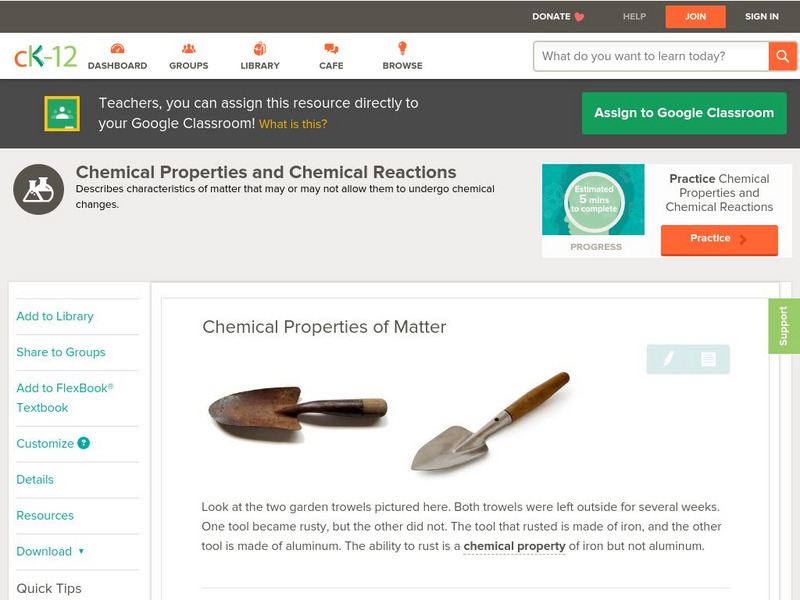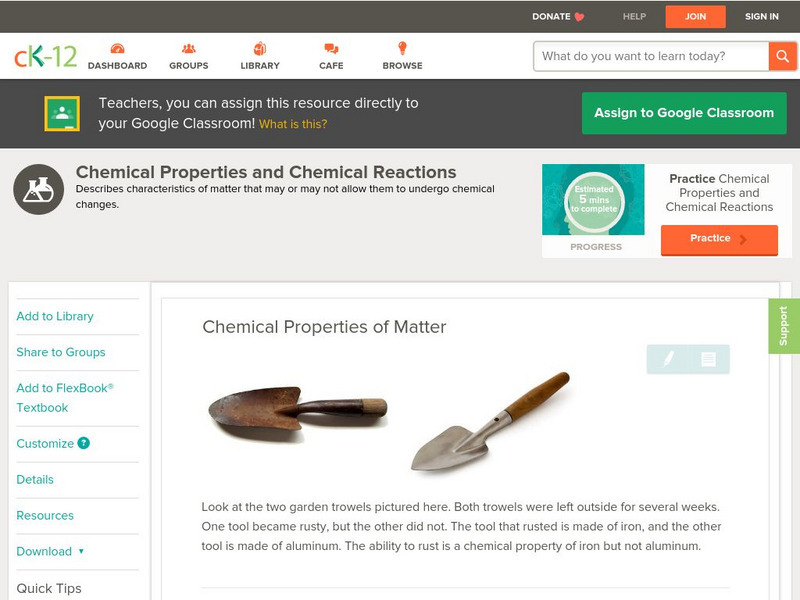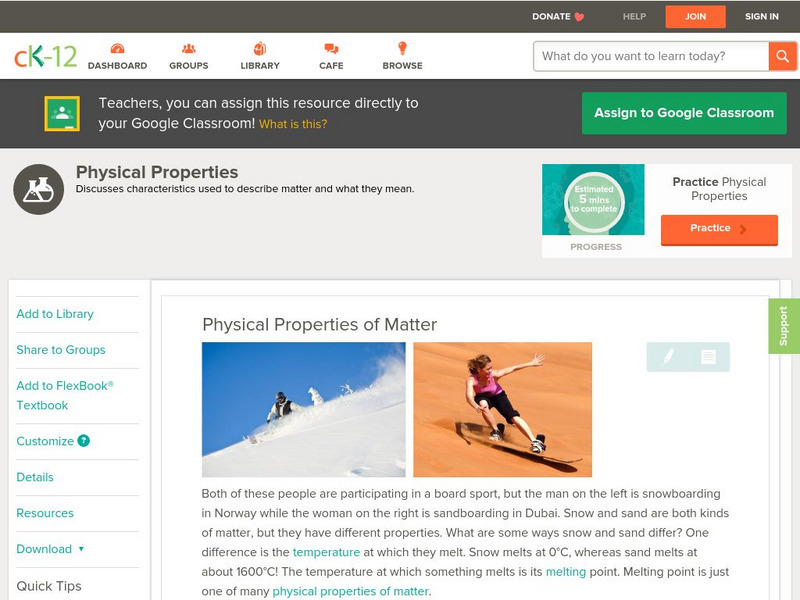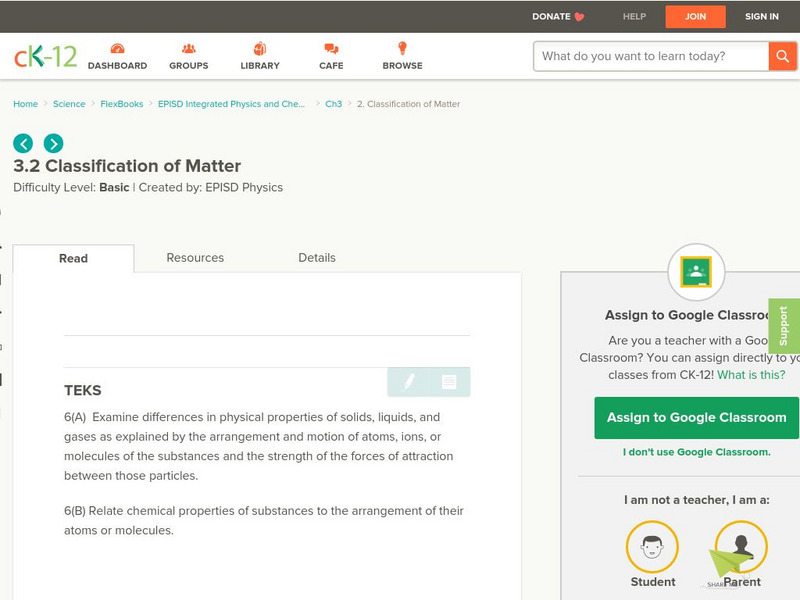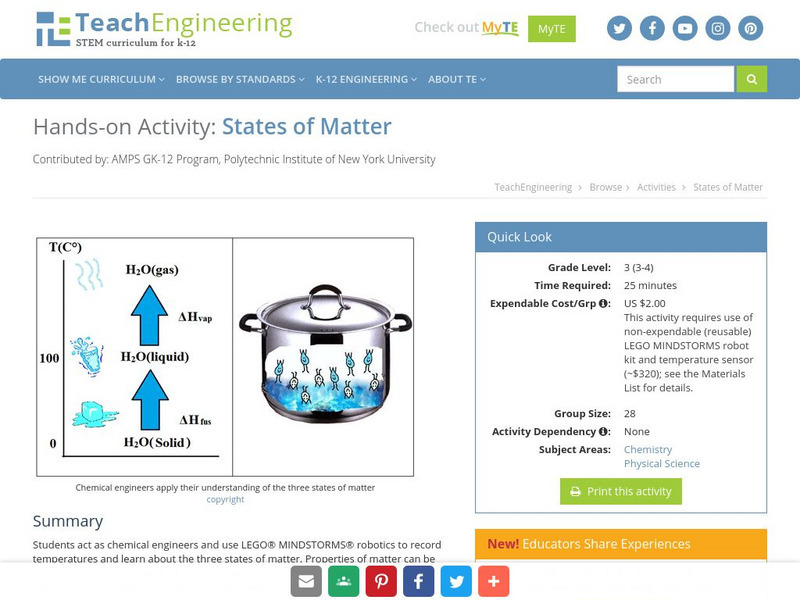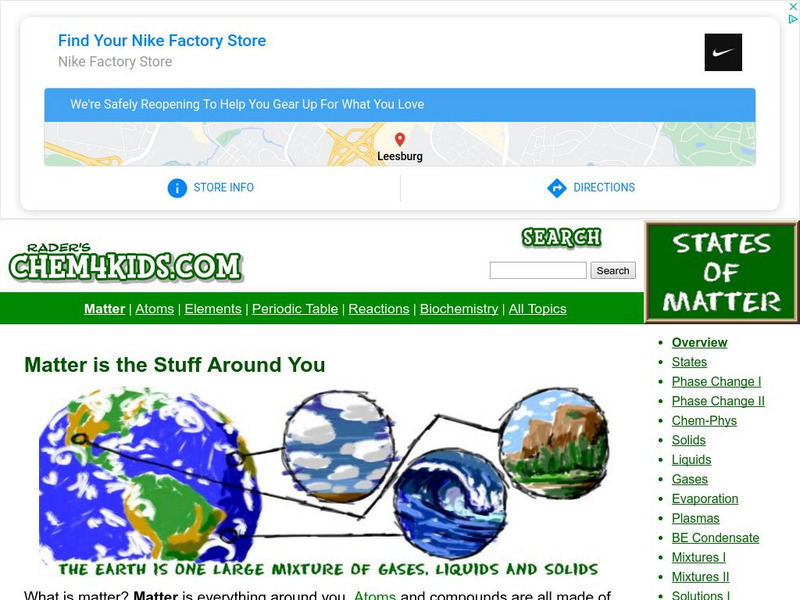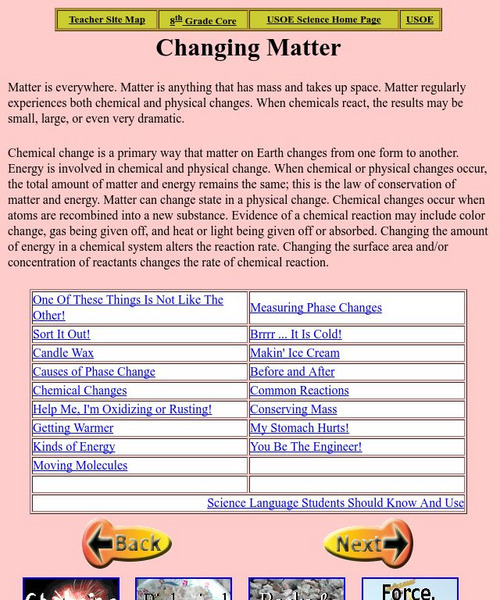Hi, what do you want to do?
Curated OER
Chromatography
Students study about chromatography, a process used to separate mixtures.
Curated OER
A Compound Problem
In this compounds learning exercise, students compare the differences between compounds and mixtures. This learning exercise has 3 short answer questions.
Curated OER
Isotopes; Molecular Notation; Electron Orbits
In this isotopes, molecular notation, and electron orbits worksheet, students read selections pertaining to isotopes, mass number, molecular notation, electric attraction, and electron orbits. In addition, students complete 11 short...
Curated OER
Isotopes
For this isotopes worksheet, students review mass number, molecular notation, electron attraction, and electron orbits. This worksheet has 5 matching and 5 short answer questions.
Curated OER
Latent Heat and Clouds
Students explore latent heat and how it relates to clouds in the atmosphere. For this earth science lesson students investigate how clouds are formed. Students examine clouds and the water cycle.
Curated OER
Renewable Energy Plants in Your Gas Tank: From Photosynthesis to Ethanol
Students examine the role photosynthesis plays in plant survival. In this renewable energy lesson students document their observations and analyze and interpret their results.
Curated OER
Angles: Angles, Angles, Everywhere
Students practice estiminating and measuring angles. After watching a short video, they identify angles in objects in the classroom and their homes. In groups, they participate in activities in which they are given a scenerio and are...
Curated OER
Solar
Students study solar energy. For this renewable energy lesson students complete several lab activities using different controls and variables.
Curated OER
Carbon Adventures Game
Sixth graders examine the processes and transformations that occur in carbon pools. They play a game to identify paths taken by carbon through the environment.
Curated OER
Oxidation And Corrosion
Students sort tarnished metals by type and experiment with different cleaning solutions and techniques to restore them to their natural color and shine.
CK-12 Foundation
Ck 12: Physical Science: Chemical Properties of Matter
[Free Registration/Login may be required to access all resource tools.] Definition of chemical property and examples of the chemical properties of matter.
CK-12 Foundation
Ck 12: Properties of Matter
[Free Registration/Login may be required to access all resource tools.] In this learning module, students examine differences in physical and chemical properties of solids, liquids, and gases.
CK-12 Foundation
Ck 12: Physical Science: Chemical Properties of Matter
Definition of chemical property and examples of the chemical properties of matter. [Free Registration/Login may be required to access all resource tools.]
CK-12 Foundation
Ck 12: Chemistry: Chemical Properties of Matter
[Free Registration/Login may be required to access all resource tools.] Definition of chemical property and examples of the chemical properties of matter.
Simon Fraser University
Chem1 Virtual Textbook: Classification and Properties of Matter
As part of a larger resource called "Getting started in Chemistry," this page examines various topics related to the study of matter. Included in the study are properties of matter, classification of matter, pure substances, chemical...
CK-12 Foundation
Ck 12: Fifth Grade Science: Physical Science: Chemical Properties of Matter
A module that provides the definition of chemical property and examples of the chemical properties of matter using explanations, pictures, and review questions.
CK-12 Foundation
Ck 12: Physical Science: Physical Properties of Matter
[Free Registration/Login may be required to access all resource tools.] Definition of physical property and examples of the physical properties of matter.
CK-12 Foundation
Ck 12: Chemistry: Physical Properties of Matter
[Free Registration/Login may be required to access all resource tools.] Definition of physical property and examples of the physical properties of matter.
CK-12 Foundation
Ck 12: Classification of Matter
[Free Registration/Login may be required to access all resource tools.] Students will use the physical and chemical properties of matter to categorize the various forms of matter.
CK-12 Foundation
Ck 12: Fifth Grade Science: Physical Science: Physical Properties of Matter
A module reviewing over the definition of a physical property and examples of the physical properties of matter. Module includes explanations, pictures, a video, and review questions.
Texas Education Agency
Texas Gateway: Properties: Extensive and Intensive
Find out about physical and chemical properties of matter, and then compare extensive and intensive property characteristics.
TeachEngineering
Teach Engineering: States of Matter
Students act as chemical engineers and use LEGO MINDSTORMS NXT robotics to record temperatures and learn about the three states of matter. Properties of matter can be measured in various ways, including volume, mass, density and...
Chem4kids
Chem4 Kids: Matter
"Matter is everything." So begins this comprehensive website on the physical and chemical properties of matter in its four main states: solids, liquids, gases, and plasmas. The text is large and easy-to-read. Students will enjoy the...
Utah State Office of Education
Utah Science: Changing Matter
Matter changes both physically and chemically on a fairly regular basis. Through these activities students will challenge their understanding of the changes that may take place with different types of matter.















